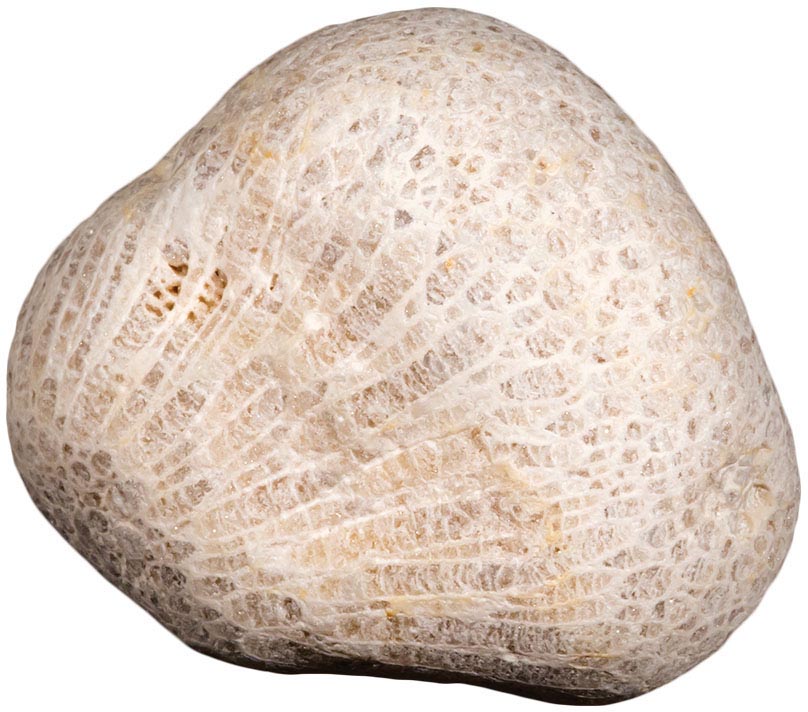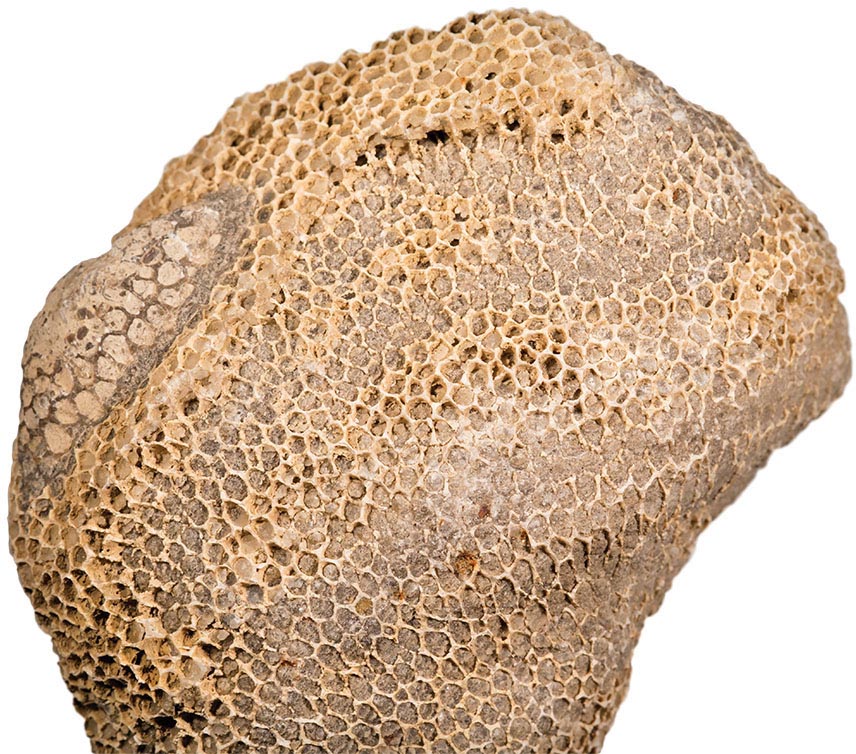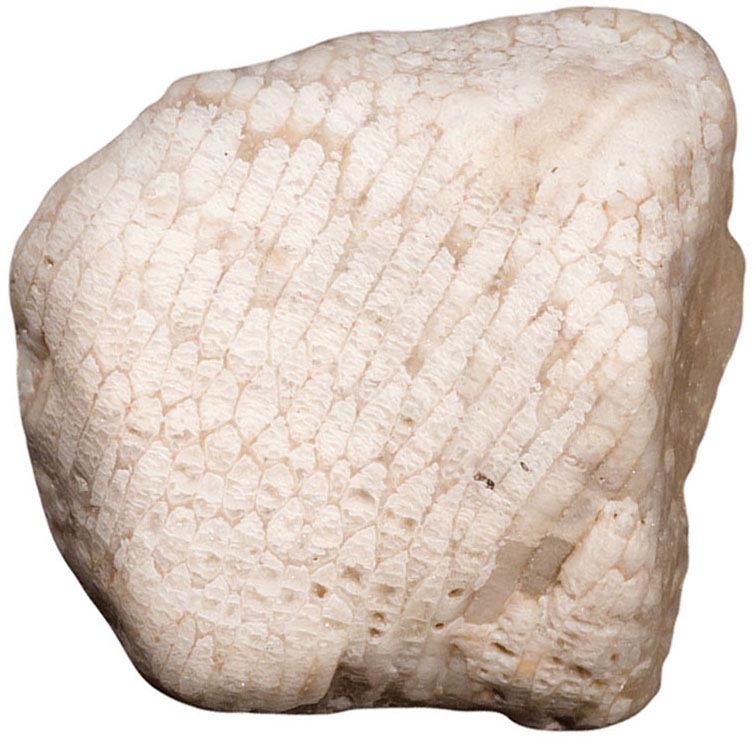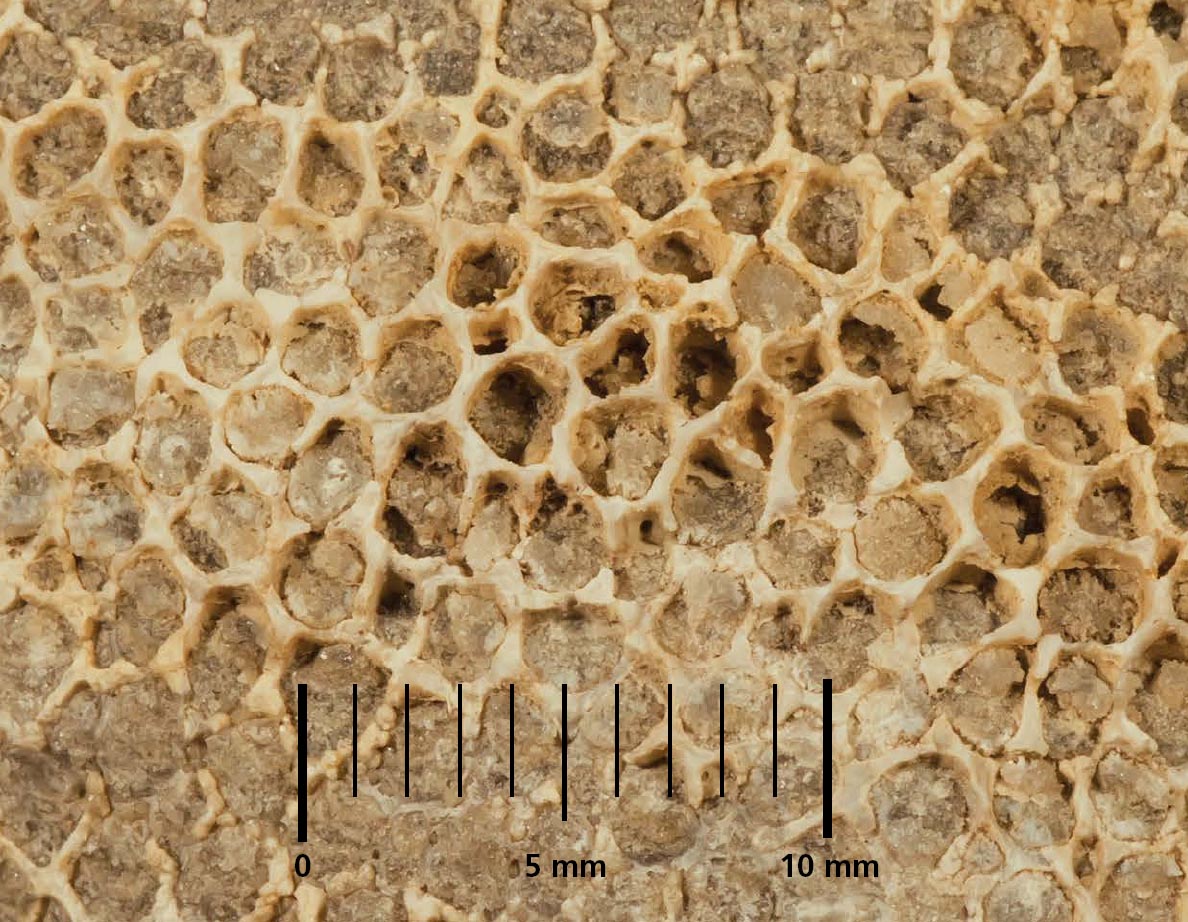
Hexagonaria is not the only genus of colonial coral present in the Traverse Group rocks. Favosites is another long-extinct genus of coral that grew in tightly packed colonies of six-sided corallites with tessellated honeycomb-like patterns. They lived in Earth’s seas much longer than any species of Hexagonaria, and several species are present in Michigan’s Devonian rocks. They are generally under-studied, and telling different Favosites species apart from each other can be exceedingly difficult. But, once you know what to look for, distinguishing them from Hexagonaria corals and Petoskey stone is easier, despite their visual similarities.
The first thing you’ll notice about Favosites is that their corallites tend to be much smaller and more delicate in appearance. With thin corallite walls, minute septa, and virtually absent columellae, Favosites are simpler-looking than Hexagonaria fossils. In addition, the smaller corallites are more parallel, longer, and more plentiful, and also more uniform in size. In many Hexagonaria specimens, some smaller corallites may be seen packed between larger ones, but Favosites tend to have a more evenly spaced structure. Careful examination of individual corallites will help you tell the specimen apart from those of Petoskey stone.


Favosites tend to have much smaller corallites and more of them, tightly packed in dense groups.
Biologically, Favosites differed from Hexagonaria in that their corallite walls had small perforations that enabled them to transfer nutrients between polyps without the need for connective coenosarc. The average collector will not be able to observe such a tiny detail, but particularly well-preserved specimens may exhibit these tiny structures under strong magnification.

A beach-worn specimen of Favosites

Favosites typically have corallites of approximately 2 mm or less.